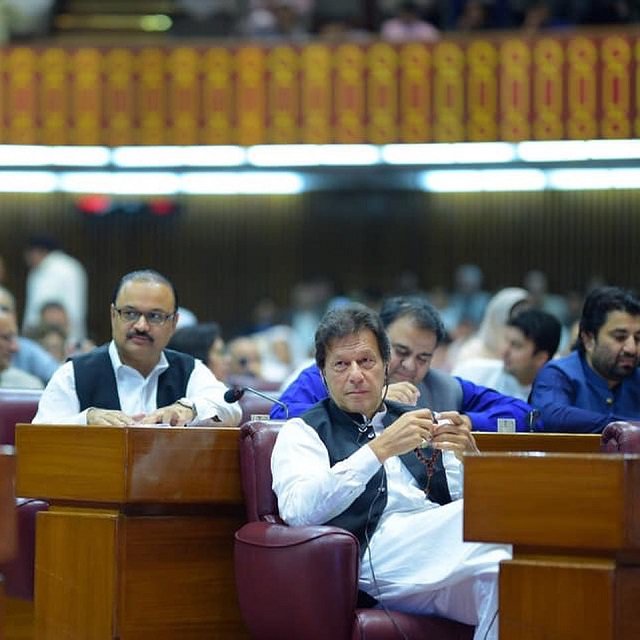
There are two distinct patterns that characterise Dar’s era as Finance Minister: an expansionary fiscal policy focusing on infrastructure and consumption-led growth; and an actively managed foreign exchange policy.
Expansionary fiscal policies are not inherently bad if they are financed wisely and lead to increased public investment. Therefore, there was nothing innately wrong with PML-N’s appetite for ambitious infrastructure development. In fact, increased government spending led to increased demand and, therefore, enhanced growth. But alongside creating assets, government’s consumption expenditure also rapidly rose. Maintaining the exchange rate, on the other hand, meant spending precious foreign exchange in the market to keep an artificial supply and in the process making imports much cheaper.
Moreover, Dar steered clear of any controversial or tough economic decisions, such as curtailing the massive losses incurred by public sector enterprises (PSEs) or addressing the issue of circular debt. Instead he opted for easier choices, not creating any ripples.
Nevertheless these patterns helped Dar to keep three critical markers of public perception at desired levels: exchange rate, GDP growth and energy prices (and inflation). More importantly, he masterfully signalled and maintained a positive surround sound throughout his tenure, making the stock market flourish and keeping the CPEC investments pouring in.
But these patterns weren’t without a cost and led to ballooning fiscal and current account deficits and consequently rising public debt, especially foreign loans. In simple terms, we enjoyed subsidised imports and dividends of consumption-led growth, not realising that we’d have to pay for it later.
No wonder that the current account deficit, which was merely $3 billion in 2013-14, grew six times to $18 billion by 2017-18. In the same time, our external public debt rose by $22 billion, as opposed to less than $10 billion in PPP’s tenure.
Fast forward to the present day, the PTI government under immense pressure from the IMF had to drastically reverse these patterns, cutting down development expenditure and significantly devaluing the rupee. It also had to continue with the borrowing spree to retire maturing debt. Between June last year and March this year, external debt had already risen by another $4 billion and overall public sector debt by four trillion rupees.
While it is unfair to criticise the PTI government for making these tough choices, it also remains a fact that these changes happened too late and too fast, virtually bringing the economy to a screeching halt. More importantly, the government did a shoddy job in managing investor confidence. And while the government has pulled all the right levers to bring in much-needed stabilisation, a strategy for recovery is nowhere in sight.
Unfortunately, Pakistan is now at a juncture where there are no easy choices. Fiscal discipline will come at the cost of compromised growth. Massive devaluation hurts but is necessary to reduce reliance on foreign loans. Fixing PSEs would mean privatisation, downsising and even liquidations, while addressing circular debt may need renegotiating contracts to reduce capacity payments.
The present phase of stabilisation will take some time and will ultimately give way to recovery but without structural reforms, the recovery would be modest and would hardly take us another two years, before we would again be knocking at IMF’s door. It’s time for this hard reality to sink in.
Published in The Express Tribune, July 2nd, 2019.
Like Opinion & Editorial on Facebook, follow @ETOpEd on Twitter to receive all updates on all our daily pieces.


1729662874-0/One-Direction-(1)1729662874-0-165x106.webp)








COMMENTS
Comments are moderated and generally will be posted if they are on-topic and not abusive.
For more information, please see our Comments FAQ